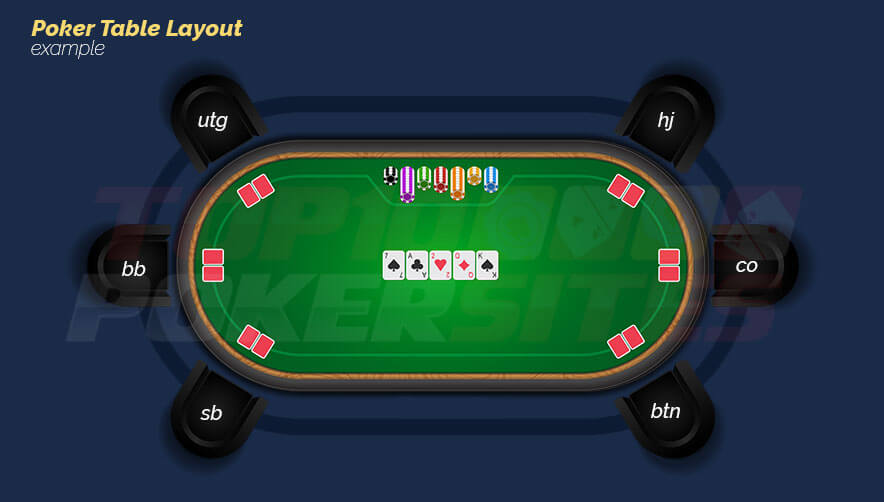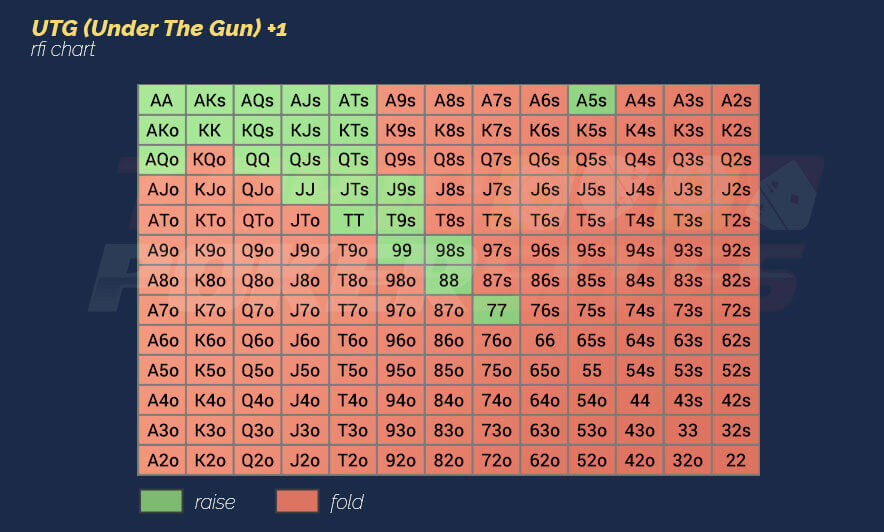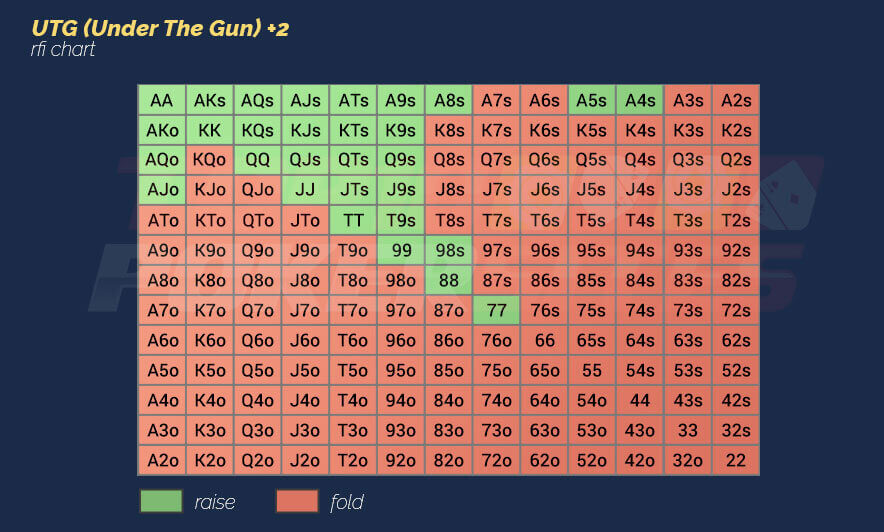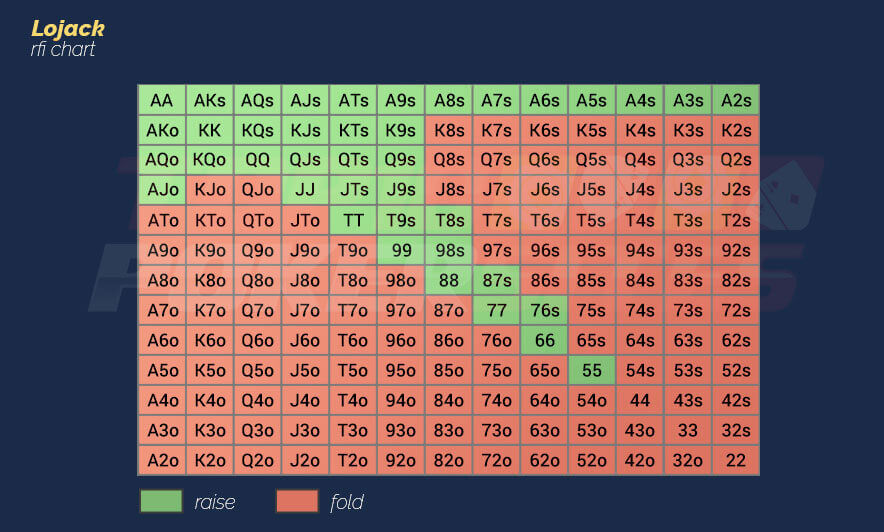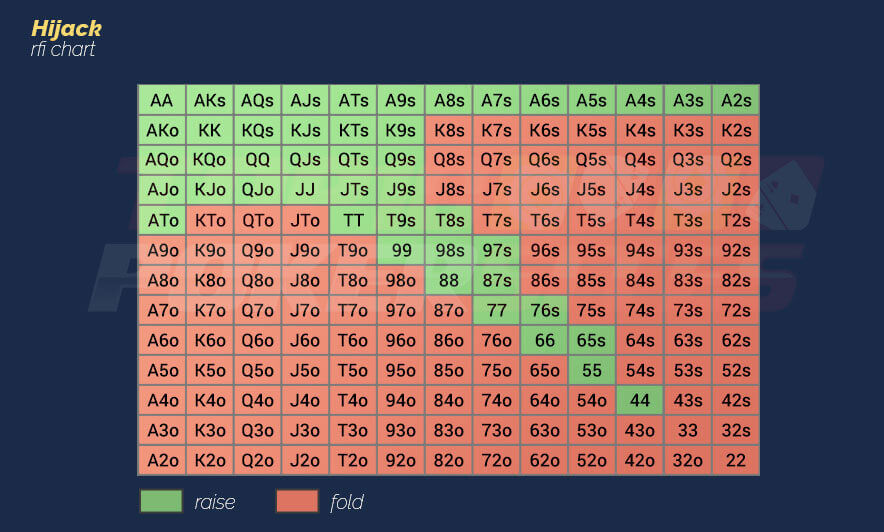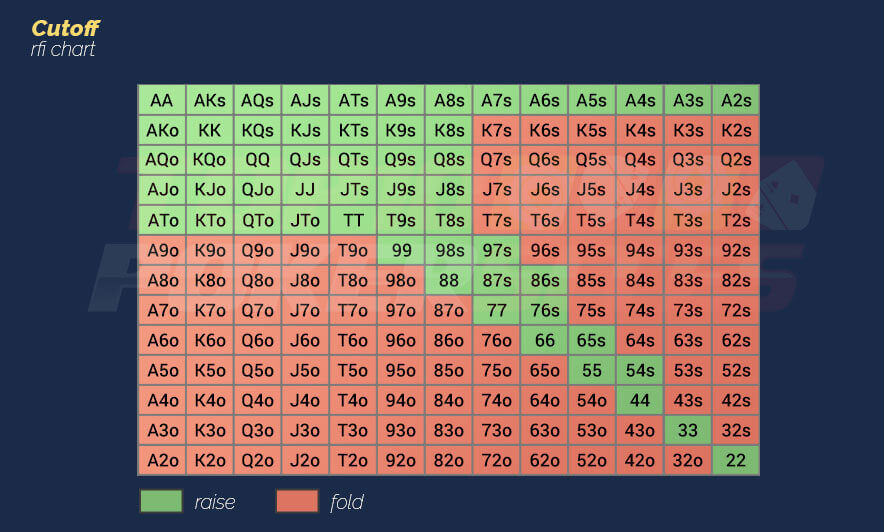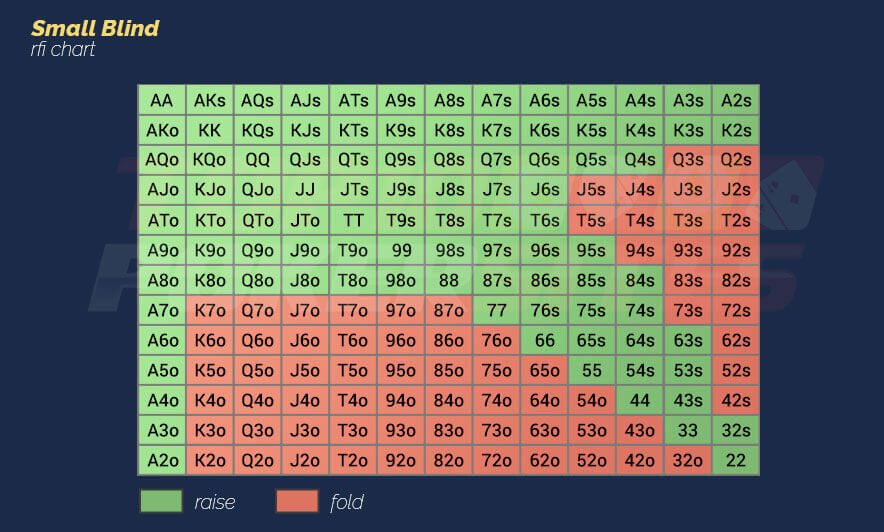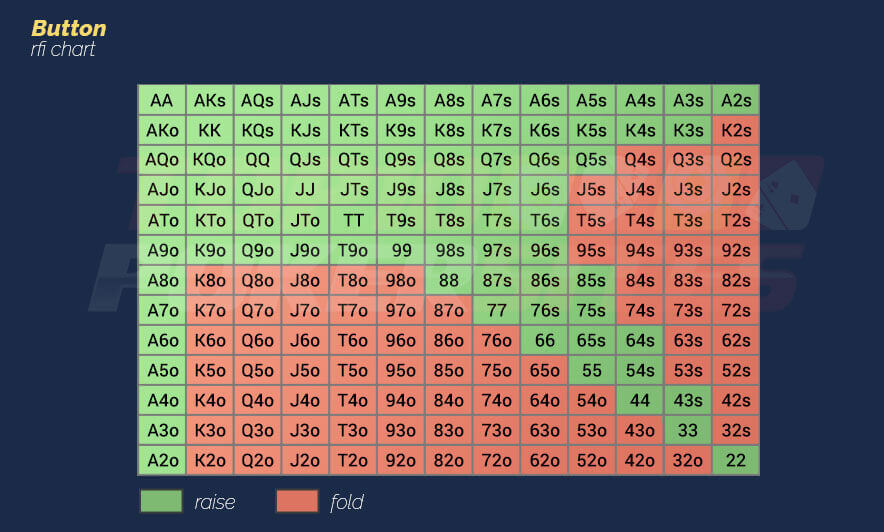Raise First In Strategy Explained - What RFI is & When To Do It
Our article will teach you what a 'raise first' in poker is, what hands you should raise on via charts and when you use RFI in different scenarios.
 The preflop is a crucial street, and it occurs most often, so you need to get it right. This means you must construct a robust preflop strategy by learning what hand ranges are suitable for the raise first in approach and when the situation calls for a fold.
The preflop is a crucial street, and it occurs most often, so you need to get it right. This means you must construct a robust preflop strategy by learning what hand ranges are suitable for the raise first in approach and when the situation calls for a fold.
When your preflop game is strong, you can prepare for the most common scenarios.
Our article will examine raising first in (RFI), display the charts for different hand ranges, and highlight some crucial things to consider when creating your preflop RFI game plan.
Read on.
What Is RFI?
Raise first in (RFI), also known as open-raise, refers to a situation in which the action is folded to you preflop, and you raise, making you the first player to enter the pot voluntarily. For instance, if the action folds to you while in the hijack position and you raise, you will be the player to have raised first in. A situation is considered an RFI only if no one limped before that.
However, an RFI must not be confused with the preflop raise (PFR), which refers to any preflop raise (including 2bets, 3bets, 4bets, and higher).
If the action has folded to you, it is always better to open-raise or fold, regardless of the position. If you tend to limp frequently, you will lose the chance to win the blinds. The only exception when it is advisable to limp is while in the small blind and provided all the players in front of you have also limped.
RFI Charts
Various seat locations at the table have different holdings when we first raise in. These positions are:
- Under The Gun (UTG) + UTG +1 and UTG +2
- LoJack (LJ)
- HiJack (HJ)
- Cutoff (CO)
- Button (BTN)
- Small Blind (SM) and
- Big Blind (BB)
Below are the charts highlighting the RFI hand ranges you should play preflop by raising when everyone folds to you. Each chart is created assuming a table of six players maximum, with 100 big blinds as the effective stack size. You will notice that the earlier positions have tighter ranges than the late ones because players acting earlier in a hand will face more opponents who can potentially employ aggressive actions than those acting later.
It’s worth noting that the hands in the following charts will yield positive expected values based on a theoretically optimal analysis.
Still, the bottom of each range will produce marginal results. However, you should fold if you receive the worst hands in these ranges.
UTG RFI Chart
Since this is the first position at the table, it shows the loosest hand holdings covering only 7%. The following two charts refer to the UTG +1 and UTG +2 locations. They are pretty similar to UTG, only even looser.
UTG +1
UTG +2
Lojack RFI Chart
Right after the UTG comes the LoJack position which shows roughly the top 13% of holdings in the chart. Short-handed players call it the UTG since it is the earliest table position.
HiJack RFI Chart
The hijack chart shows approximately the top 18% of hand holdings. Short-handed players often refer to it as the middle position.
Cutoff RFI Chart
This chart covers roughly the top 27% of hands. Poker pros usually stick to these hand ranges unless some weak players are in the blinds.
Small Blind RFI Chart
Although this chart shows approximately 36% of hand holdings, many poker pros open wider than that. This is because the small blind is in the late position during the preflop, and the players look for the opportunity to take advantage of weak players.
Button RFI Chart
Being in the in-position postflop makes the button the most desirable and advantageous location at the table. This position roughly covers 48% of hand holdings. However, the range can increase dramatically depending on the opponents you are playing against. This means weak players in the blinds and those who fold too much.
RFI Frequencies
We already mentioned that each position assumes a different range of holdings when a player should raise in. Let’s see what that looks like when translated into frequencies for both short-handed (six players or less) and full ring (more than six players) cash games.
| Table position | RFI frequency |
| Small blind (SB) | 36% |
| Button (BTN) | 48% |
| Cutoff (CO) | 27% |
| Hijack (HJ) | 18% |
| Lojack (LJ) | 13% |
| Middle position (MP) | 11% |
| Under the gun +2 | 9.5% |
| Under the gun +1 | 8% |
| Under the gun (UTG) | 7% |
It is evident that the later positions are more profitable and have a higher open-raise frequency since players have more informational advantage at those stages. However, the only exception is the small blind, which has a less aggressive open-raise frequency than the button. The logic is that the button has the broadest open-raise range and a guaranteed in-position (the last to act in each betting round) postflop.
On the contrary, the small blind is always guaranteed to be out of position (act first on each betting round) postflop.
How Much Should You Raise First In?
If you wonder how much you should raise in this situation, poker pros recommend two approaches:
- Players should raise to the same amount from every position (approximately 2.25x of the big blind) except for the small blind.
- They should also use a smaller raise size from an early position and increase it as they approach the button. Some of the world’s best poker players usually raise 2bb from every position and increase their raise size to 2.5bb at the button.
However, players sometimes need to make exploitative adjustments and deviate from the recommended 2.25bb opening size. For instance, if they notice that they are playing against one or several calling stations, they don’t want to open-raise AA for 2bb but raise a more significant amount (e.g., 5bb) with their strong value hands. On the other hand, small open-raise sizings will be more profitable if opponents fold pretty frequently in the blinds, regardless of our sizing.
It is also worth noting that you should keep your preflop sizing the same regardless of your hand strength. Trying to protect your strong hand by raising 4x or more will only give your opponents too much information, so they can quickly adjust their strategies and exploit the situation.
RFI in Tournament Play
The abovementioned charts can also be applied to tournament play. However, it is a little challenging to take them for granted and only stick to them, considering that players have to consider other variables. These include:
- Independent Chip Model (ICM)
- M-ratio, structure, and blind levels
- Effective stacks
- Presence of antes
Poker pros’ golden rule is to raise bigger the deeper into the tournament they are. However, they adjust their strategy based on their opponents’ effective stack size. They check the stack their opponents hold and choose the sizing that is the average number for preflop raise purposes, regardless of how big their stack is.
Best Poker Rooms To Play Online Tournaments
My list of the best poker sites which I consider to be the best rooms to play in 2024:- 100% Legal & Licensed
- Verified Bonus
- Mobile Friendly
- Advertiser Disclosure
Kindly be aware that some links on Top 10 Poker Sites are affiliate links, for which we may earn a commission. Find out more on our terms & conditions
- Must be 18+ to participate.
Displayed 3 of 8 rooms
Conclusion
Knowing the right hands to raise is crucial when the action folds around you, as it can immensely affect your win rate Naturally, you are not obliged to reproduce them perfectly, but the more you master them, the better player you will be. You will know what hands you have in your range and better understand what hands you can bet for value and what you can bluff with.
FAQs
Should players religiously stick to these charts when choosing which preflop hands to raise?
No, they shouldn’t. The charts should serve as a base to start from, but they must be ready to adjust their strategy based on the play at the table. Players should play tighter or looser than the abovementioned charts indicate, depending on their opponents.
Can other players predict your next moves if they know you follow these charts?
This is impossible since your opponents would have to keep very close track of thousands of hands to decipher what cards you are playing.
Is there a chart for the big blind position at the table?
No, there isn’t. If everyone in front of you folds and the action folds around you in the big blind, you will win the pot.

